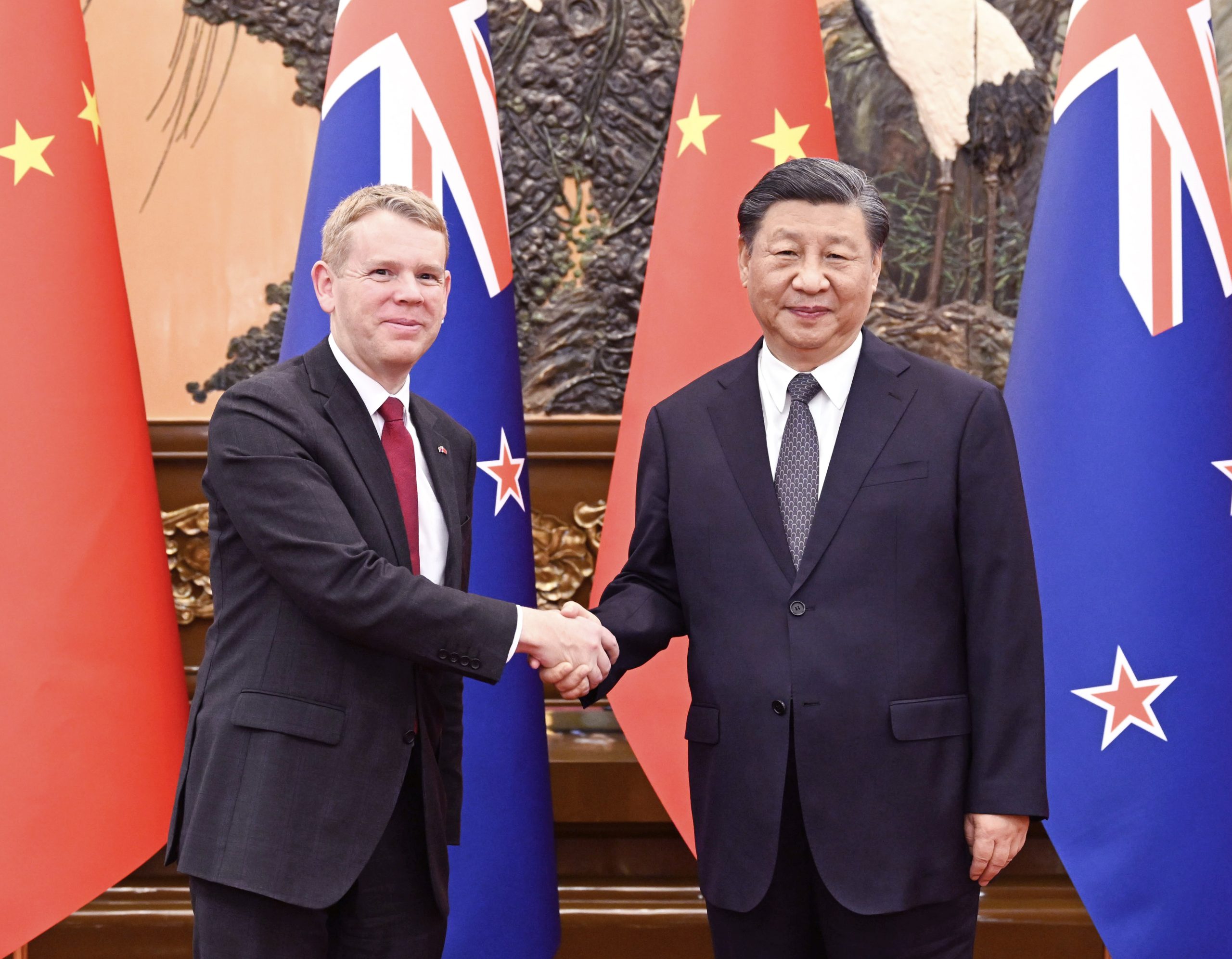China’s intention to grow its presence in the Pacific at the expense of traditional Australasian partners is a main driver in New Zealand’s updated defence and national security strategy.
New documents released Thursday by Defence Minister Andrew Little chart the challenges and priorities in defending New Zealand in the coming decades, given the current Defence Force is “not in a fit state to respond to future challenges”.
The overall strategy, as outlined by Little, concerns having a “combat-capable defence force”, tackling disinformation and economic security risks, enhancing public knowledge of national security, strengthening Pacific resilience and maintaining the “global system of rules”.
The Defence Policy Strategy Statement identifies the principal challenges as “climate change and strategic competition”, Little saying the strategy’s goal was to create a “secure, sovereign, resilient New Zealand and region”.
“We will do that by acting early and deliberately in pursuing and protecting our defence interests, particularly in – and for – the Pacific.
“We will enhance our many partnerships, particularly with our sole formal military ally, Australia, and the Pacific Islands countries who are more family than just neighbours.”
It’s further in the document that New Zealand’s relationship with China is discussed and how co-operation was essential but came with risks.
“The relationship with China is significant for New Zealand, and its cooperation will continue to be essential in addressing many global challenges. At the same time, the Chinese government’s assertive pursuit of its strategic objectives is the major driver for the new era of strategic competition among states.
“An increasingly powerful China is using all its instruments of national power in ways that can pose challenges to existing international rules and norms.
“Beijing continues to invest heavily in growing and modernising its military, and is increasingly able to project military and paramilitary force beyond its immediate region, including across the wider Indo-Pacific.”
It’s then acknowledged the Pacific had become “increasingly significant as a theatre for strategic competition”, mainly due to China’s actions.
“The Chinese Government in particular has sought to grow its political, economic, and security influence in the Pacific at the expense of more traditional partners such as New Zealand and Australia,” it read.
“Activities that would be of significant concern include: the establishment of a persistent military presence by a state that does not share New Zealand’s Pacific security interests and values; military or para-military-backed resource exploitation (particularly fisheries); or even military confrontation or conflict.”
The document said potential triggers of such activities included tensions between China and Taiwan, competing claims in the South and East China Seas and ongoing tensions on the Korean Peninsula that were exacerbated by North Korea’s “nuclear weapon and missile programmes”.
“Even without deliberate intent, tactical miscalculation could lead to conflict with consequences that could spread across the region, including into the Pacific.”
Also highlighted was the interest of European countries in the Pacific, namely Germany and France, which were “seeking to engage more actively in the Indo-Pacific, even as Russia’s invasion of Ukraine has required increased focus on Europe”.
It referenced New Zealand’s deep ties and the need for expanded defence cooperation with its only formal defence ally in Australia, but also consider the United States as a “crucial defence partner” amid deepening defence engagement in the past decade.
“The United States has long underwritten security in the Indo-Pacific, and is taking an increasingly close interest in contributing to security in the Pacific.
New Zealand’s National Security Strategy, another document released today, also recognised the importance of the relationship with the United States, saying “sustained engagement by the United States and other like-minded nations … is critical for New Zealand’s security”.
It used the 2022 deal China made to build a port in the Solomon Islands as an example of how China’s “development co-operation” could be used for civilian and military purposes and therefore “fundamentally alter the strategic balance in the region”.
The report gave an overview of 12 core national security issues that most directly impacted New Zealand’s interests.
They ranged from strategic competition and emerging technologies to terrorism and space security. Also referenced was the growing interest in Antarctica and how some states saw the region as a “potential location for a range of military and security-related activities”.
Also released was the Future Force Design Principles which would guide investment over the next 15 years.
Eleven principles were proposed to determine that investment with three being considered constants – having an integrated systems approach, the response to climate change being guided by guardianship, and recognising people as the most important resource.
The authors made the remaining eight principles scalable, proposing the priority in which governments should consider them.
The two principles considered to be of a higher priority were “concurrency”, being able to undertake activities in multiple locations simultaneously, and “technological approach”, the pursuit of leading tech to assist “systems and capabilities”.
Other principles including combat capability, resilience and flexibility were given a medium priority.
Secretary of Defence Andrew Bridgeman, speaking at a breakfast at Parliament to mark the release of the documents, said the global environment had “deteriorated more quickly than we imagined”.
He said New Zealand’s record of responding to events as they arose would not best serve the country’s interests as threats increased in their complexity.
Defence Force Chief Air Marshall Kevin Short acknowledged the challenges the Defence Force was facing, including aging capabilities and infrastructure, and high attrition.
He reinforced the necessity for the Defence Force to operate in multiple locations at the same time, something the documents gave high priority.
SOURCE: NZ HERALD/PACNEWS














